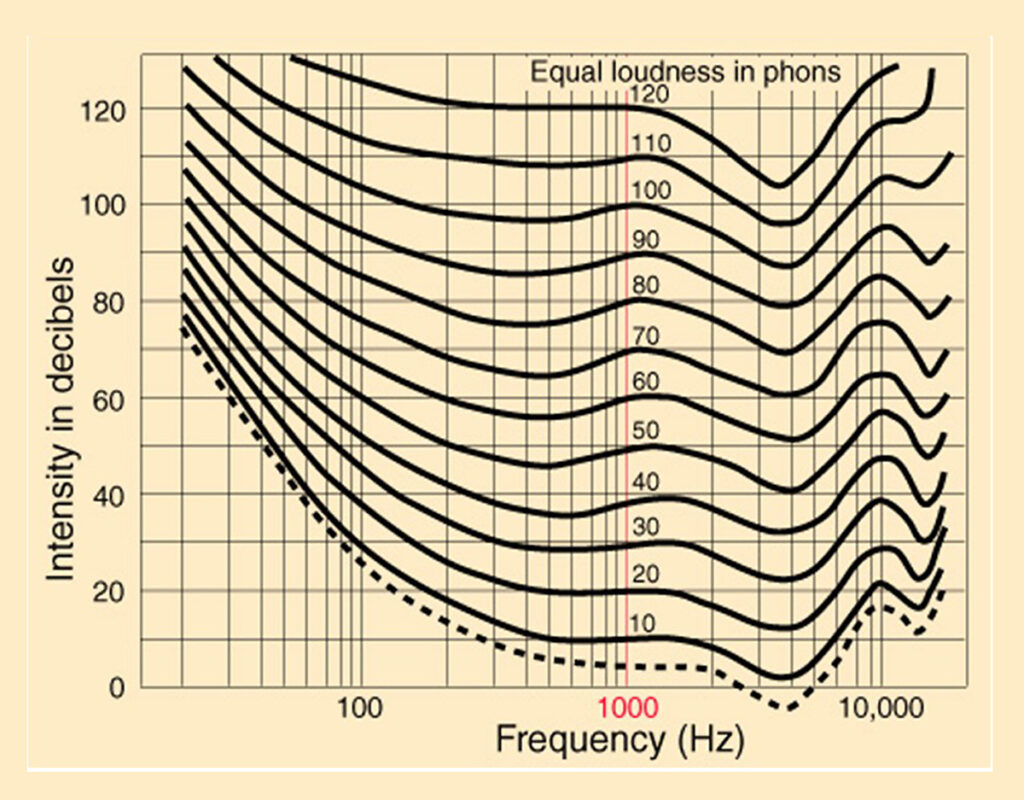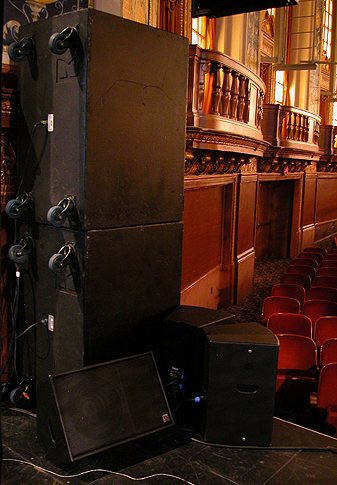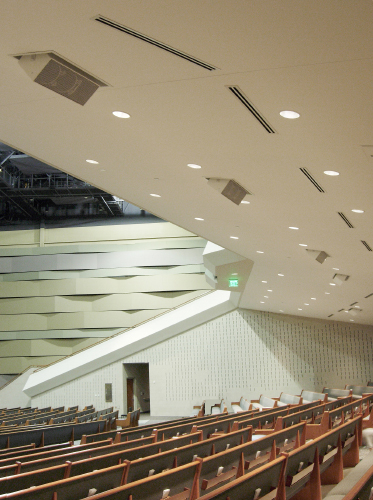Very often the topic of “room tuning” comes up in the practice of pro audio, but what we’re really talking about is “system optimization.” And over the course of many years, we’ve used many tools that seemed to—or actually did—contribute to desirable results.
But system optimization is not just about turning knobs (virtual or otherwise) until things sound good. Sure, you can do that, and maybe that’s all you have time for under certain circumstances, but it’s not likely to constitute the highest possible grade of work.
I’ve been pondering this topic for many years, also noting a wealth of existing reference sources (articles and books) that go to various depths in offering solid and useful information about the craft.
Against that backdrop, it occurred to me that there’s not been much focus on basic practices—things that need to be considered before we get into an involved system optimization process. That idea prompted this discussion.
Key Questions
There are shows and then there are shows. Many are simple, using only left and right loudspeakers at the stage that are mounted on stands, or ground-stacked, or flown. These are the easier ones, because the time it takes to equalize and tailor coverage of a left-right source is, generally speaking, not something that will cause you to need to consult a calendar.
Sometimes, however, it’s not so simple or straightforward. If the event is a corporate presentation, or perhaps a theatrical performance with a band in the orchestra pit, what will the optimal loudspeaker complement be? Our goal is to ensure that every audience member has an equally enjoyable experience, and that’s rarely an easy task.
How long will it take to design the system, plan it, install it, and then optimize it? Now it’s time to get out the calendar and negotiate a reasonable timeframe with the event organizer. Time is money, especially when renting high-profile venues and employing numerous support people, so the faster that you can perform effective work, the more the client is likely to be impressed and ask for you again for future events.
Will front fill loudspeakers be required? It’s quite they will, to attain proper coverage in the front seating rows that are tough for the mains to reach.
Or it can be something more specific like live music from an orchestra pit drowning out the vocalists in the first few rows, which you can mitigate by adding vocal-only reinforcement from a series of compact, low-profile loudspeakers. (A tip: use a matrix output of the console to route only vocals to these loudspeakers).
What about the balcony? Are there seats under and over (on) it? Both spaces usually exhibit different acoustical characteristics than the orchestra seats. And perhaps there’s also a loge, or a dress circle, or a tier of balconies that each need to receive attention. Ultimately, these areas will need likely need reinforcement from additional loudspeakers.
Now, the trick is that all of these loudspeakers, perhaps arranged in several zones, need to be combined together so that the sonic energy in one area will not cause problems in another area. If the room is fairly reflective, the “corruption” of areas bleeding into other areas is common, and can be one of the more difficult aspects of optimizing the system. If the room is highly reflective, then the challenge grows significantly greater and the calendar should reflect the need for enough time to do the job properly.
Accurate & Uncolored
This leads me to consider the concept of making a system “flat” versus equalizing to a target curve. Think about it—do you want a console that alters the frequency and phase response on every channel in some arbitrary fashion? Of course not.
You might want to alter a given channel with respect to EQ, dynamics, timing, effects, but how far would you get if there was a hidden deviation from a relatively flat, even response in the signal path that could not be removed? You’d spend all of your time working around such an obstacle, instead of optimizing the musicality and intelligibility of the performers.
The same is true with loudspeakers. Whatever goes in is what should come out. No more, no less. You can apply “house” curves if you like, but the basic foundation of the system should be a response that’s as flat as you can reasonably make it, in the time allowed.
It’s simple to exaggerate bass or high frequencies (or both) for hip-hop, dance, metal (or whatever) music in order to overwhelm the listeners. But it’s quite a different story to deploy such exaggerations (and I’m not saying there’s anything wrong with them) to a system that is accurate and uncolored.
When a reasonably even response has been achieved as the starting point, then the process of “tuning to taste by ear” becomes quicker, simpler, and far more effective. Instead of a mountain of bass, you’ll have definition. The tonality of the kick drum won’t be buried in the bass guitar, and vice versa.
Some practitioners look at Fletcher-Munson curves and come to the conclusion that a good sound system should have a different response at different sound pressure levels, but that would be mistaking the intent of these admirable researchers. What Fletcher and Munson did do was to identify that human hearing exhibits varying sensitivities, at varying frequencies, as the overall SPL is increased or decreased.

This is not the same as saying that a sound system should change its response characteristics as the operating level is altered. Quite to the contrary, it should normally remain equalized exactly the same way, regardless of operating level.
Staying Faithful
Of course, there are exceptions. If the system is at low level, such as background music in a noisy environment, then some degree of exaggeration of the LF and HF will give it more presence. But if it’s a performance system, intended to command the attention of the audience, then it should be provide as even and flat of a response as possible.
This might seem confusing because many sound systems become brittle, strident, and outright distorted as they’re driven hard, and especially as they approach their maximum power capability. It justifiably causes a consciousness operator to want to reduce the HF content to help save everyone’s ears—not the least his or her own. But it has nothing to do with Fletcher-Munson curves.
Distortion is far more damaging to human hearing than clean, accurate sound presented at an identical SPL. This is because of the exaggerated harmonic content that takes place when LF, MF, and HF drivers enter into their “breakup mode,” which means they no longer are faithfully reproducing the input signal but are adding harmonics of their own that are not present in the program source.
It also applies to amplifiers that are driven into clipping, as well as preamps, microphones, and just about anything else in the signal chain. In a word, it doesn’t sound good when distortion occurs.
Unfortunately, some practitioners push a given system into severe distortion because it’s what they believe represents a fat, rich sound. Fat it may be, but bearing any resemblance to music, it is not.
Subtractive EQ
Let’s assume that you have five zones to equalize: left, right, front fill, underbalcony, and overbalcony. We’ve already talked about front fill; generally speaking, it should be equalized to make the vocals—or other program content—sound natural and full.
But wait! There’s more. Always start by equalizing, listening, and generally making sure that you’ve achieved a balanced even sound quality from the largest and most powerful loudspeakers or clusters/arrays.
They almost always provide more bass than is necessary in most of the areas of the room, and therefore, those front fill loudspeakers, which are probably quite small, will not need to reproduce much LF because it’s already being delivered by the main system.
Consequently, the front fills can probably get much louder, whenever needed, if they’re high-passed so that they’re not being expected to provide much LF content. So EQ them while the main system is operating and use them to “fill-in” the portion of the audible spectrum (or program content) that’s not getting into the seating areas that they’re covering. This takes some time to master, and is aided greatly by using an accurate reliable measurement system.
By the way, I suggest never doing this by ear alone—very few ears are that good, if any. Our hearing just isn’t geared towards being refined enough to replace a high-resolution spectrum analyzer.
The same approach, that of subtraction equalization, can be used with great effectiveness for equalizing delayed loudspeakers, whether they’re under a balcony, over a balcony, on box booms, or anywhere else in the room. Before even bothering to listen to these loudspeakers (expect, of course to ascertain that they’re working properly), evaluate the energy that’s coming from the mains. You’ve already adjusted their spectral content in the seating areas that they’re intended to cover. (Right?)
Is the energy that’s arriving under and/or over the balcony the same? Or is it skewed rather badly? Chances are it’s the latter. The task is to use the loudspeakers in these regions to “fill in” the portions of the spectrum that aren’t arriving from the mains. And don’t forget the need to critically time them to support—rather than clash with—the main system, or the result will be all sorts of nasty comb-filtering.
Further, by equalizing the delay loudspeakers to provide the spectral energy that’s not being provided by the main loudspeakers, you will be greatly reducing the excitation of the reverberant field in the room. You can always add in reverb later; it’s a lot harder to take it out.
As noted at the outset, this is only a primer to get the thought process in motion. Many additional procedures exist that further your goal of going from “passable” to a beautiful sonic experience!


















